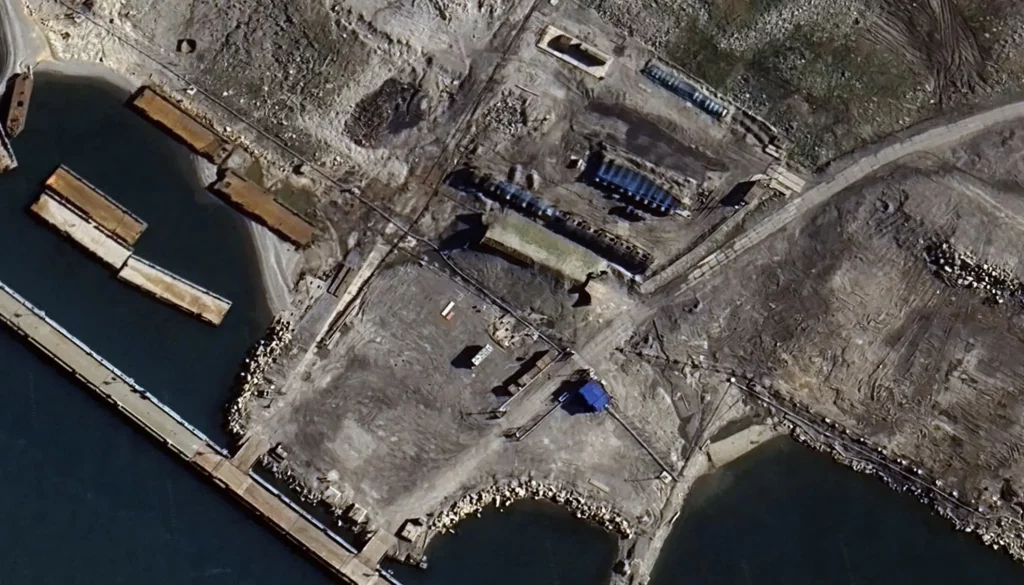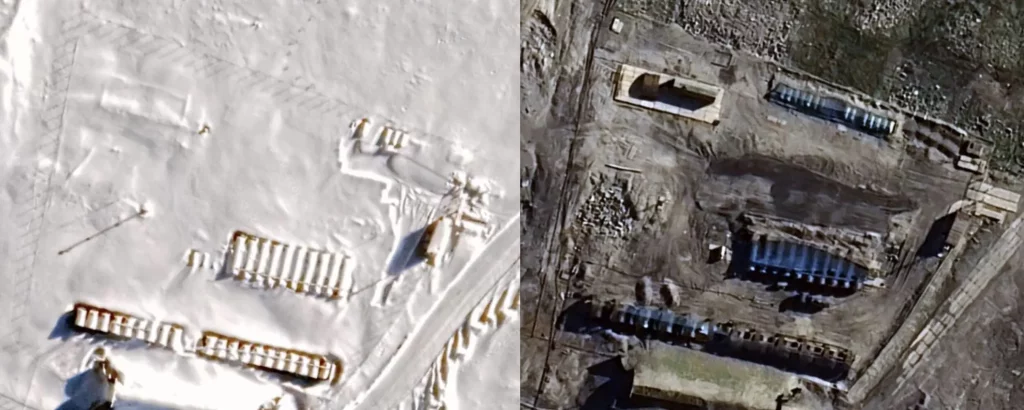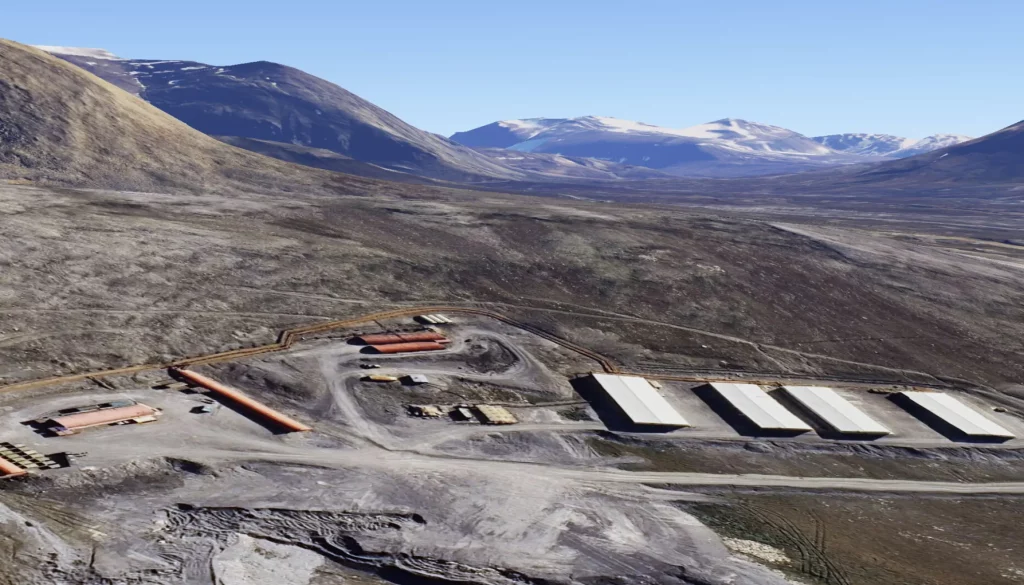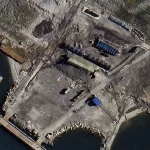Russia tries to protect fuel tanks at Arctic nuclear base from Ukrainian drones

Satellite images have shown that metal “protective cages” have been installed over fuel tanks at the Novaya Zemlya nuclear test site.
This is повідомляє reported by The Barents Observer.
August Google Earth images (August 14, 2025) recorded three rows of fuel tanks near the settlement of Pivnichny on the Novaya Zemlya archipelago, covered with blue metal mesh — the same “protective cages” that were previously used to cover aviation fuel tanks at Russian military airfields.
The meshes are supposed to reduce the risk of detonation when hit from the air — primarily from strike drones.
At Novaya Zemlya, gasoline tanks for ground equipment were covered first; large tanks with heavy fuel oil for the heat and power plant and some aviation fuel tanks were left uncovered. This indicates the prioritization of protection of mobile fuel and the limited means of protection.

The image on the left shows uncovered fuel tanks in winter 2021. The image on the right shows the same tanks with drone nets in mid-August 2025.
The decision to cover the tanks with nets is a response to the significant increase in the range of attack UAVs. Over the past year, drones have reached deep into Russian territory. The appearance in service of the Ukrainian FP-5 Flamingo cruise missile with a claimed range of up to ~3,000 km further increases the vulnerability of remote facilities, including the Novaya Zemlya test site.
Reference: Novaya Zemlya is one of Russia’s most secret military complexes: it is home to a nuclear test site and subcritical laboratories, which are managed by the 12th Main Directorate of the Ministry of Defense in cooperation with Rosatom. The archipelago is located more than 2,500 km north of Ukraine; This is where hundreds of nuclear tests were conducted in Soviet times, including the Tsar Bomba test.
Satellite footage and the practical covering of tanks demonstrate two key trends: first, the capabilities of unmanned systems are now forcing Russia to withdraw defense measures far from the line of combat contact; second, strategic Arctic facilities, even those working in the nuclear-technical sphere, are already at risk from long-range strike use by UAVs.

The image shows the complex where Rosatom and the 12th Main Directorate of the Ministry of Defense conduct nuclear tests. Further up the valley are dozens of tunnels where real nuclear bomb tests were conducted from 1964 to 1990.
Also, the day before, USM wrote that tankers of the Russian “shadow fleet” continue to spill oil in the seas of Europe.





